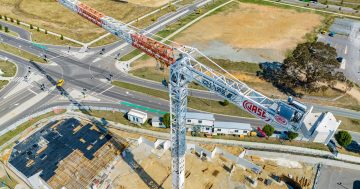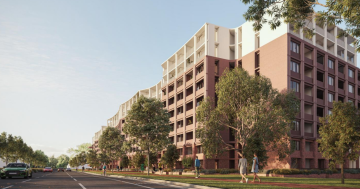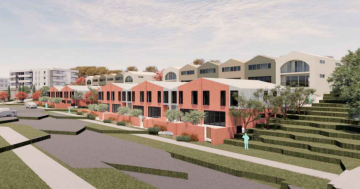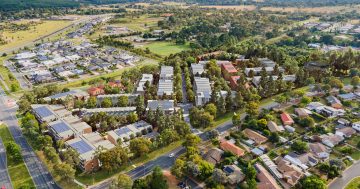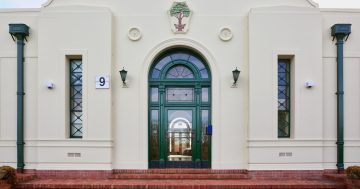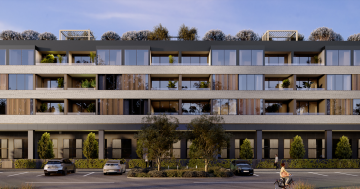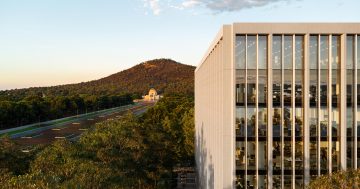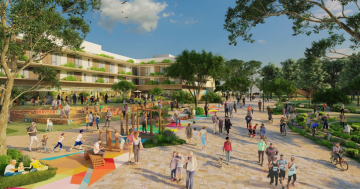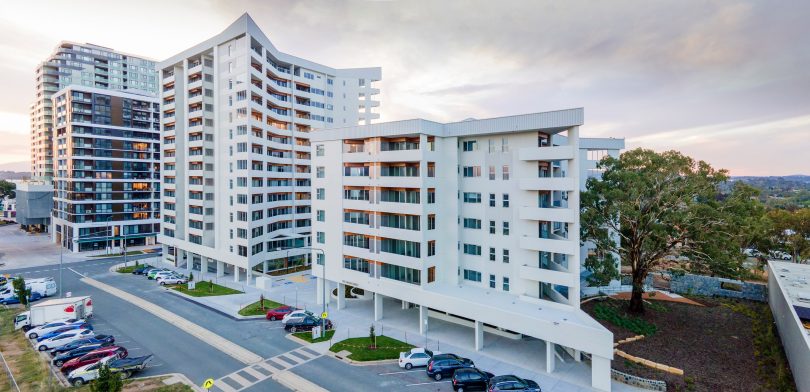
A 300-year-old box tree anchors the Lumi Collection development. Photo: Supplied.
A majestic 300-year-old box tree stands like a guiding light at one end of the Lumi Collection development in Gungahlin. And in many senses, that’s exactly its role.
Two apartment blocks take their cues in size and scale from the registered tree, which was treated with kid gloves to ensure that its hydrology was unaffected by the construction process.
“When you find a tree like this one in Canberra, it’s our harbour views,” says developer George Kathelakis from KDN, as several parrots coast in to roost in its branches. “It comes with so many bonuses, including the wildlife, so why would you ever remove it? We started with the tree and worked backwards to preserve it.”
Lumi Collection is now substantially sold, another apartment development in the rapidly growing precinct near Yerrabi Pond. Sustainability and good design in the form of solar orientation and practical features were fundamental principles for KDN Group.
But in a town that prides itself on the image of a clean, green bush capital, how easy is it to actually deliver high environmental standards? And will developers make money doing so?
“The regulatory regime is imposed on you to begin with,” Kathelakis says. “That’s the baseline, but it shouldn’t be about reaching the bare minimum of what you can get away with.
“When you undertake to set new benchmarks, you take risks. For us, it’s a careful measure of how much additional cost you add and how that can fairly be reflected in the price of the units. We will largely be controlled by the market, and if the market is not ready or prepared to accept the price of those extra sustainability measures, you can’t achieve the results.”
There are government incentives for implementing higher environmental outcomes. Kathelakis says these could have been claimed at an EER rating of 7, while Lumi achieves 8.9, but they sit at the minimum rather than encouraging the very best design across the development as a whole.
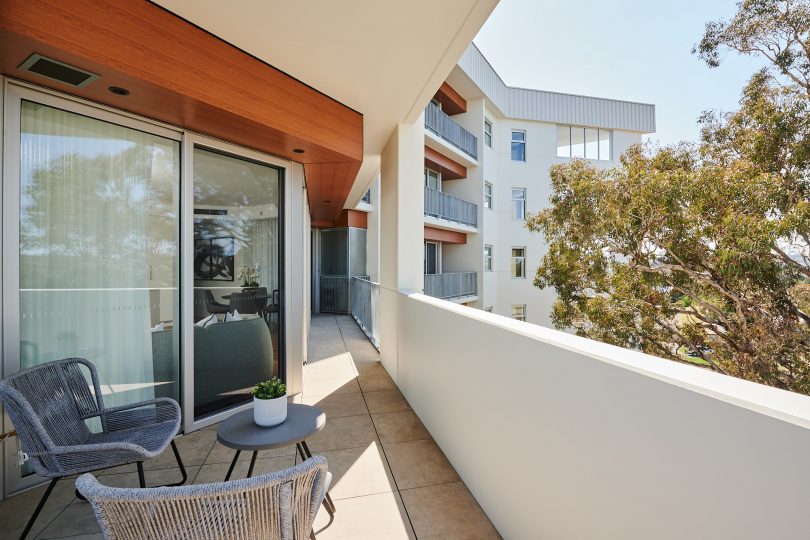
North-facing units embrace the retained significant tree. Photo: supplied
The system also means that sustainability measures can be averaged across a development rather than standardised for all units. High-performing units can elevate the rating for a development that also includes west-facing units without sun shading and still meet compliance standards.
“I don’t accept that myself,” Kathelakis says. “When you get a design like this, they shouldn’t be approved.
“Living in good design makes a difference. It’s not rocket science, and it doesn’t have to rely on high tech or sophisticated mechanical systems. Heat recovery units, for example, are not mandatory in the national construction code. They’re mentioned almost as a throwaway.
“If you’re building in Canberra, you should have thermally broken windows and a heat exchange as an absolute minimum. Those two things would solve a lot of sustainability and cost issues in new buildings.”
Lumi includes those features as a standard measure, along with insulation, recesses and orientation. The trade-off was a slightly less efficient building configuration – the yield on the site wasn’t as high as it could have been.
“Is that worth it? At times we weren’t sure,” Kathelakis admits, although he says close collaboration between the architects, designers, developer and builders shows what can be achieved. He thinks buyers also respond well when they’re shown how the whole precinct operates, from balconies to driveways, waste rooms and communal spaces as well as their own apartment.
“I think planning authority would agree there should be tougher consequences for poor design, but that’s very hard when the planning system is backwards,” Kathelakis says. “It’s constructed around trying to prevent the worst possible product, not promote the best product.”
Once a development is unit titled and constructed, there is no going back on bad design and poor sustainability measures.
“Someone has to endure the pain of that forever and a day. I think there’s a professional obligation to do the right thing in the first place and sometimes push back on the grounds of people being able to live a comfortable existence in the property for years to come.
“As a developer, you should be asking, would I be happy living here myself?”












